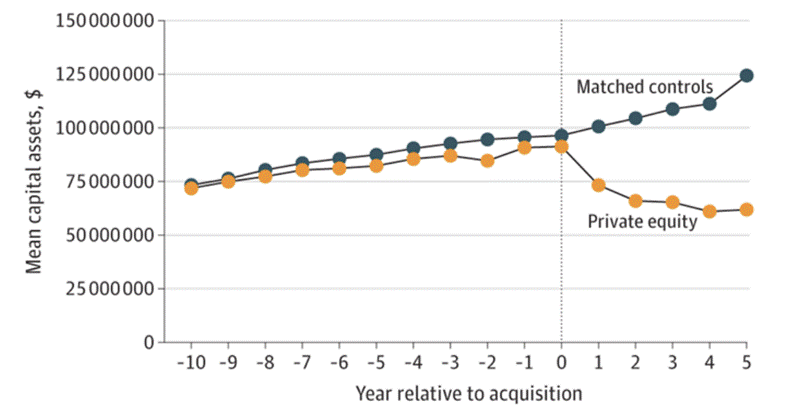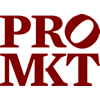Over the last year, the United States government has demonstrated increased concern about private equity’s involvement in health care. Barak Richman and Richard Scheffler discuss why the government’s actions have not yet matched the energy of its words and how academics and policymakers must continue to investigate private equity’s influences as they devise policy to address its harms.
This article kicks off a series that explores how private equity reduces competition in the United States healthcare sector and the ways in which enforcers can respond. You can read the rest of the series as it is published here.
One might call 2024 the year that United States policymakers awoke to the dangers of private equity (PE) investment in health care markets. Like many moments when the policy world speaks—and, to be fair, this is true for many problems in health care markets beyond PE—the decibel level of the alarm far exceeded any corresponding investment in solutions. But it can be said that the issue captured the attention of Congress, the executive branch, and assorted policy bodies.
The flurry of scrutiny was thoroughly deserved, as PE investments in the health sector over the past decade have triggered consequences worthy of alarm. The past years have shown just how vulnerable the nation’s health sector is to exploitation and its health care markets to failure in the face of aggressive profit seekers. But there is a reason that the topic garnered so much attention while producing so few action items. This article, after describing the events and studies of 2024 (and early 2025), dives into the crucial divide that lies ahead for policymakers interested in preventing the spread of PE-induced damage: namely, separating what we know from what we don’t know.
An eventful 2024
Although health policy scholars started documenting the rise of PE investment in 2019, and the Medicare Payment Advisory Commission issued a report on Private Equity and Medicare in 2021, Congress did not take notice until 2024. The Senate Subcommittee on Primary Health and Retirement Security, part of the Senate Committee on Health, Education, Labor and Pensions (HELP), held a hearing titled, “When Health Care Becomes Wealth Care: How Corporate Greed Puts Patient Care and Health Workers at Risk,” in April 2024. The Senate Budget Committee issued in January 2025 a scathing bipartisan report entitled, “Profits Over Patients” that filled 171 pages with outrages by PE health care investors. In between, Congress has introduced an assortment of bills, including the “Health Over Wealth Act,” which specifically targets PE investment strategies. The collective output excoriated the involvement of PE in the U.S. health care system, blaming it for increasing prices, bankrupting safety net providers, and disregarding patient welfare.
The Biden administration also contributed to the activity. In September 2023, the Federal Trade Commission sued U.S. Anesthesia Partners, Inc. (USAP) and its private equity owner, Welsh, Carson, Anderson & Stowe, alleging a multi-year anticompetitive scheme to consolidate anesthesiology practices in Texas. And in the waning days of the administration, on January 15, 2025, the Department of Health and Human Services issued its “Report on Consolidation and Private Equity (PE) in Health Care Markets.” The report highlighted the results of a previously issued Inquiry into Impacts of Corporate Ownership Trend in Health Care, which launched a cross-government public inquiry into the effects of PE investments in health care markets.
Some states have pursued their own reforms. In February 2024, in an effort to disclose PE strategies to acquire medical practices and consolidate the market, New York began requiring health care entities to provide notice to the state’s department of health at least 30 days prior to engaging in a “material transaction.” California’s legislature is considering a bill that would require the California attorney general to approve any health care transactions involving PE firms and would limit how such firms could contract with health care providers. Oregon is considering a bill that would restrict private equity and corporate control of the state’s health care providers. And in Colorado, the state’s attorney general pursued legal action against USAP for monopolizing the market in that state, (the same behavior in Texas for which the FTC sued). The Colorado attorney general ultimately obtained a settlement for $200,000 in monetary relief and the modification of non-compete agreements with providers. Many other states are also considering legislative and judicial initiatives concerning PE’s role in local health care markets.
A careful observer of these events might note certain disconnects: the outrage targeted at private equity was vociferous, but the policies were modest, perhaps even muted. The FTC’s suit against USAP and Welsh, Carson, Anderson & Stowe alleged that the company’s serial acquisitions violated the antitrust laws, and though serial acquisitions may be a signature strategy of PE firms, the claim was a general-purpose application of the Sherman and Clayton Acts. Even this landmark case eventually resulted in a settlement with the PE firms, although the suit against USAP continues. The Health Over Wealth Act aimed to prohibit sudden capital withdrawals from health care facilities, which ostensibly targets a common PE strategy of selling off assets and was motivated by some signature bankruptcies of hospital systems. But hospital bankruptcies and closures are frequent, and most are consequences of consolidations by large, mainly nonprofit health systems. States have managed to pass only a few bills that do more than require certain disclosures. In sum, despite the vociferous outrage against PE firms, there has been little change in regulatory policy and certainly no overhaul in the government’s approach toward PE’s involvement in health care.
This disconnect—and the central question of whether outrage should be directed at private equity firms at all—is captured in a colorful exchange between two groups of academics. On one side stand Erin Fuse Brown and Mark Hall, authors of “Private Equity and the Corporatization of Health Care” write:
Like a cloud of locusts, … private equity investment is fundamentally more threatening to health policy than other forms of acquisition and financial investment. … The influx of private equity into health care poses sufficient risks to warrant an immediate legal and policy response.
On the other side stands Charles Silver, David Hyman, and Michael Cannon, who respond to Brown and Hall with a revealingly titled comment, “Blaming the Messenger.” The trio offer this rejoinder:
[Health care businesses] with no connection to PE investors pioneered the abuses of which Brown and Hall complain [and] have raked in hundreds of billions or even trillions of dollars by underhanded means. … Instead of blaming the relatively recent involvement of PE investors for problems that have plagued the health care system for decades, Brown and Hall should have focused on the features of the system that encourage bad behaviors. … PE investors are simply operating in ways that maximize their profits given these dysfunctional regulations.
In short, is the problem private equity, or is it the broader financialization of health care delivery? Should we target bad actors, or only bad behavior? Should we be skeptical of any profit-seeking objectives in health care markets, or should we prevent the entry of only certain short-term profit seekers like PE firms? These are rudimentary questions in great need of answers before any progress can be made in addressing the toxic combination of PE and markets.
What we know and what we don’t know
A fruitful place to begin is to focus on what we know and distinguish it from what we do not (yet) know.
One observation, widely acknowledged, is that the health care sector has experienced an influx of investment from PE and other private investors such as venture capital and Real Estate Investment Trusts (REITs) over the past 15 years. Health care is one of the top three to five sectors for PE activity, roughly proportional to its share of GDP. Further increased activity is expected. Health care businesses purchased by PE firms increased from 352 in 2010 to 937 in 2020, representing $806 billion for the period and covering markets that included both inpatient services and outpatient services, elder and disabled care, and pharmaceuticals. PE-backed companies now own more than 30% of physicians in approximately one quarter of metropolitan statistical areas (MSAs) across the country and control over half of physicians in about 13% of MSAs. PE firms have also invested heavily in nursing homes, hospitals, and emergency departments, and some estimates suggest that more than 40% of the country’s emergency rooms are “overseen by for-profit health care staffing companies owned by private equity firms.” Up to a quarter of mental health and substance use facilities in some states are owned by PE. While the share of PE ownership in some outpatient care delivery settings ranges from approximately 5-15% of practices, PE firms have been especially active recently in acquiring companies in home care, dental care, mental health, dermatology, and vision. For example, the percentage of dentists affiliated with PE nearly doubled from 2015 to 2021.
A second observation, with robust support, is that PE acquisitions lead to higher prices for insurers and patients. Hospitals acquired by PE firms increase prices by 7-16% and profit by 27%, and PE-acquired physicians’ practices increase prices 4-20%. One study found that prices increased by over twice as much for PE-backed anesthesiologist physician management companies compared to non-PE backed equivalents. In addition to these sharp price increases, evidence suggests that PE-backed firms disproportionately engage in up-coding, providing unnecessary services, exaggerating population health risks, and ordering more high margin tests and procedures. Richard Scheffler et al. offer stark illustrations of how PE-acquired practices impose significantly higher prices compared to matched control practices (see Exhibit 5).
A final observation is the anodyne realization that there is much more to learn. While PE-acquired firms predictably raise prices and attempt to reduce costs, studies offer nuanced results on how PE transactions affect health care quality. PE acquisitions of nursing homes and other inpatient facilities have decreased quality, as measured by adverse events and mortality. One study found that PE-owned hospitals improve profitability without compromising quality but show evidence of reduced staffing, though perhaps explained by a shifting patient mix. Other studies show PE-owned facilities pursuing lower shares of Medicare patients and increased out-transfers of higher-risk (and lower margin) patients to other hospitals. One possible explanation for reduced quality is that PE-purchased entities tend to shed assets more than similar control entities (see figure), but there remains a need for more research into the impact of PE ownership across specialties and sites of care.

In short, it appears that PE-owned entities exhibit systematic differences from other entities, and some of those differences (see especially the effect on nursing homes) are indisputably matters for public alarm. But there is variation across PE firms, just as there is variation across nonprofit entities; PE investments have different effects on different markets; and most significantly, there are few causal connections between the unique governance features that PE firms exhibit and the particular harms (and potential benefits) that they appear to produce.
Next steps
One cannot develop solutions until one knows what problem is to be solved. Such is the case with private equity in health care.
That is not to say that we remain ignorant. The significant research described above, and especially the widespread evidence that PE investment leads to price increases, legitimizes concern, even alarm, for policymakers. But it is hard to be exercised about higher prices if the effect on quality is uncertain and if the mechanisms that lead to higher prices are not well understood.
Of utmost urgency is to direct attention not just to the market effects of PE investments but to the organizational strategies that PE firms employ. A focus on organizational questions could not only inform why certain PE firms wreak havoc in certain health care markets, but also how private investment could be channeled to improve the efficiency and quality of health care delivery.
More fundamentally, an inquiry into organizational questions may offer insights into the foundational debate between Brown & Hall and Silver-Hyman-Cannon. It could explain which market features to correct and what investments we want to attract, and it might reveal precisely who we want engaged in our current health care system, despite all its vulnerabilities for exploitation and abuse. It would offer policy options that are more meaningful than disclosure requirements or one-off enforcement actions, yet it would avoid crude measures designed to block health care markets outright from certain entrepreneurs.
At the same time, a quest for understanding should not be equated with delay. The anger is real and legitimate. Even if responsibility for the market failures belong to those who constructed and regulated the market, that does not absolve PE entities of ethical culpability for exploiting those failures at unprecedented levels. A hole in a fence does not justify robbing the house. This is a moment where moral outrage is both highly justified and could be harnessed constructively.
One thing for certain is that the decibel volume and calls for policy attention are not going away. The HHS report, discussed above, included an opportunity for public comments, and the report noted “the volume of comments and criticisms that target transactions engineered by private equity firms.” The report continued:
This seems to have struck a nerve in the public. In theory, private investment in health care services could lead to increases in output, reduced prices, and improved quality, but the comments we received—which are consistent with the growing body of research—suggest that the opposite is true. The harmful effects of private equity in the health care delivery system deserves ongoing scrutiny and greater research.
Authors’ Disclosures: The authors thank the Arnold Foundation for generously supporting their research, much of which underlies the arguments made in this article. From June 2024-January 2025, Barak Richman served as Senior Counsel for Competition Policy at the Department of Health and Human Services and was one of the principal authors of the January 15, 2025 Report on Consolidation and Private Equity in Health Care Markets, mentioned in this article. The authors report no other conflicts of interest. You can read our disclosure policy here.
Articles represent the opinions of their writers, not necessarily those of the University of Chicago, the Booth School of Business, or its faculty.






